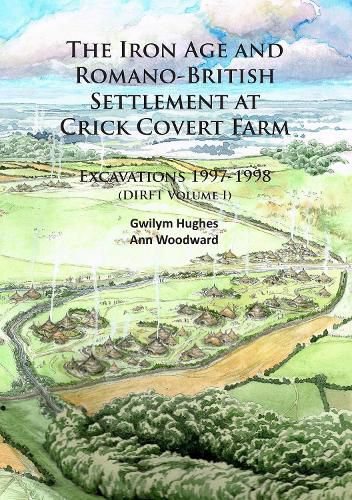Readings Newsletter
Become a Readings Member to make your shopping experience even easier.
Sign in or sign up for free!
You’re not far away from qualifying for FREE standard shipping within Australia
You’ve qualified for FREE standard shipping within Australia
The cart is loading…






This volume is the first of two reports on archaeological excavations undertaken ahead of the eastern expansion of Daventry International Rail Freight Terminal (DIRFT) which lies in the northern watershed region of Northamptonshire at its border with Warwickshire.
The excavations, covering 178 hectares, recorded one of the most extensive Iron Age farming settlements yet discovered in the British Isles. It comprised at least five individual sites of house clusters and enclosures, spread around the rim of a shallow valley overlooking around 100 hectares of open pasture. At its peak between 400 BC and 100 BC the settlement would have contained up to 100 circular buildings.
Volume 1 describes the excavation of the largest of these individual sites, that at Covert Farm, Crick, excavated by the Birmingham University Field Archaeology Unit. From the outset the excavations adopted an innovative approach to examine social themes in Iron Age studies, such as relationships with rubbish, fire and water, and the way life in the settlement may have been experienced by its inhabitants - themes that are presented and discussed in this book.
$9.00 standard shipping within Australia
FREE standard shipping within Australia for orders over $100.00
Express & International shipping calculated at checkout
This volume is the first of two reports on archaeological excavations undertaken ahead of the eastern expansion of Daventry International Rail Freight Terminal (DIRFT) which lies in the northern watershed region of Northamptonshire at its border with Warwickshire.
The excavations, covering 178 hectares, recorded one of the most extensive Iron Age farming settlements yet discovered in the British Isles. It comprised at least five individual sites of house clusters and enclosures, spread around the rim of a shallow valley overlooking around 100 hectares of open pasture. At its peak between 400 BC and 100 BC the settlement would have contained up to 100 circular buildings.
Volume 1 describes the excavation of the largest of these individual sites, that at Covert Farm, Crick, excavated by the Birmingham University Field Archaeology Unit. From the outset the excavations adopted an innovative approach to examine social themes in Iron Age studies, such as relationships with rubbish, fire and water, and the way life in the settlement may have been experienced by its inhabitants - themes that are presented and discussed in this book.